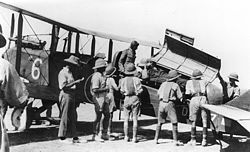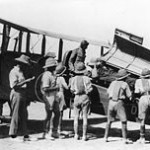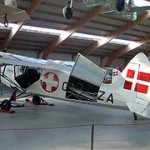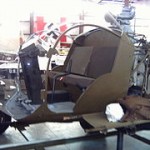An air ambulance is an aircraft used for emergency medical assistance in situations where either a traditional ambulance cannot reach the scene easily or quickly enough, or the patient needs to be transported over a distance or terrain that makes air transportation the most practical transport. These and related operations are referred to as Aeromedical. Air ambulance crews are supplied with equipment that enables them to provide medical treatment to a critically injured or ill patient. Common equipment for air ambulances includes ventilators, medication, an ECG and monitoring unit, CPR equipment, and stretchers. An important distinction should be made between a medically staffed and equipped air ambulance which can provide medical care in flight, and the use of a non-medicalized aircraft simply for patient transportation, without care in flight. The military and NATO refer to the former as “Medical Evacuation (MEDEVAC)” and to the latter as “Casualty Evacuation (CASEVAC)” respectively.
History
Military
As with many innovations in Emergency Medical Service (EMS), the concept of transporting the injured by aircraft has its origins in the military, and the concept of using aircraft as ambulances is almost as old as powered flight itself. It is often stated that air medical transport likely first occurred in 1870 during the Siege of Paris when 160 wounded French soldiers were transported by hot-air balloon to France, but this canard has been definitively disproven. During the First World War air ambulances were tested by various military organizations, and were used regularly for crash rescue by the American Army and Navy within the United States, though none were actually used in combat. Aircraft were still primitive at the time, with limited capabilities, and the effort received mixed reviews. In post-World War I, several Dehavilland DH-4 were converted to air ambulances for the US Army and Navy.
The exploration of the idea continued, however, and fully organized air ambulance services were used by France and the United Kingdom during the African and Middle Eastern Colonial Wars of the 1920s; over 7,000 casualties were evacuated by the French during this period. In 1920 during their suppression of the “Mad Mullah” in Somalialand used a Airco DH.9A fitted out as an air ambulance. It could carry a single stretcher under a fairing behind the pilot. By 1936, an organized military air ambulance service was evacuating wounded from the Spanish Civil War for medical treatment in Nazi Germany. The first use of helicopters to evacuate combat casualties was by the United States Army in Burma during WW2, and the first dedicated use of helicopters by U.S. forces occurred during the Korean War, during the period from 1950–1953. The French notably used light helicopters during their Indochina war of the post-war era.
While popularly depicted as simply removing casualties from the battlefield (which they did), helicopters in the Korean War also expanded their services to moving critical patients to more advanced hospital ships once initial emergency treatment in field hospitals had occurred. Knowledge and expertise of use of aircraft as ambulances continued to evolve along with the aircraft themselves, and by 1969, in Vietnam, the use of specially trained medical corpsmen and helicopters as ambulances led U.S. researchers to conclude that servicemen wounded in battle had better rates of survival than motorists injured on California freeways. This conclusion inspired the first experiments with the use of civilian paramedics in the world. The US military has recently employed UH-60 Black Hawk helicopters to provide air ambulance service during the Iraq War to both civilians and military personnel. The use of military aircraft as battlefield ambulances continues to grow and develop today in a variety of countries, as does the use of fixed-wing aircraft for long-distance travel, including repatriation of the wounded. The next step in this development may be shown by a current NATO working group which is investigating the possible future use of Unpiloted Aerial Vehicles (UAVs) for casualty evacuation.
Civilian
The first civilian uses of aircraft as ambulances were probably incidental. In northern Canada, Australia, and in the Scandinavian countries, remote, sparsely populated settlements were often inaccessible by road for months at a time, or even year round. In some cases in Scandinavia, particularly in Norway, the primary means of transportation between communities was by boat. Early on in aviation history, many of these communities began to receive service from civilian “bush” pilots, flying small aircraft and transporting supplies, mail, and visiting doctors or nurses to the isolated communities. Bush pilots probably performed the first civilian air ambulance trips, albeit on an ad hoc basis, but clearly, a need for such services existed.In the early 1920s, Sweden established a standing air ambulance system, as did Siam (Thailand). In 1928 the first formal, full time air ambulance service was established in the Australian outback. This organization became the Royal Flying Doctor Service and continues operating to the present. In 1934, the first civil air ambulance service in Africa was established in Morocco by Marie Marvingt. In 1936 Air ambulance services were established as part of the Highlands and Islands Medical Service to serve the more remote areas of Highland Scotland.



